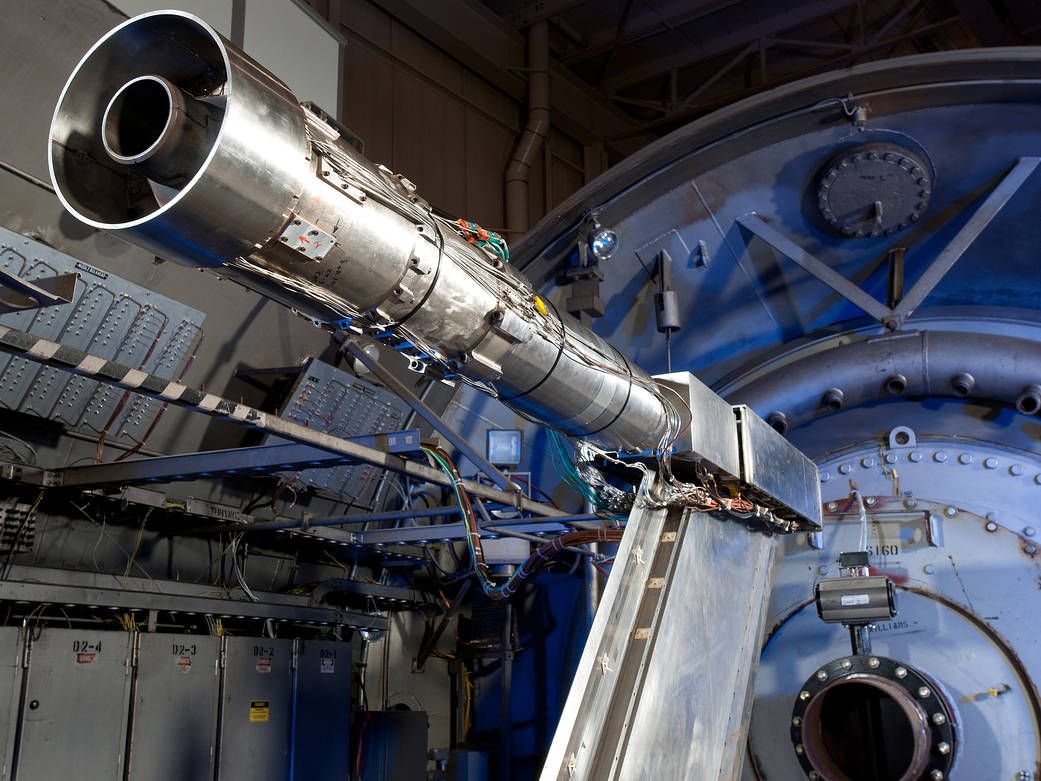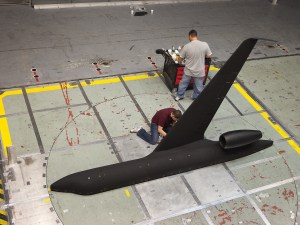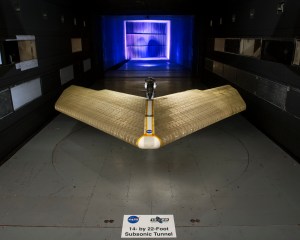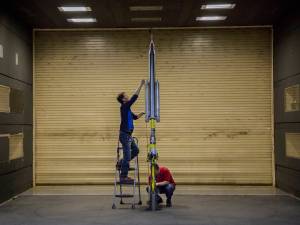Home
Quick Facts
Techniques
Capabilities
Editor’s note: This material is being kept online for historical purposes, but it will no longer be updated.
Fundamentally, force measurement systems are used to measure resultant forces/moments on a test article. These forces can be measured using a variety of different techniques and instrument types, including simple gaging of structural elements directly on the test article, or using internal/external balances to which the test article is mounted.
These are some of the common techniques and instrument designs used for measuring forces/moments:
Test Article Instrumentation
Often it is required that forces/moments exerted on a structural element of the test article be measured (e.g., loads on deflected control surfaces, trim tabs, at the base of wings, etc.). When this is required, sometimes the size of the element eliminates the possibility of using a balance, and the element must be instrumented and calibrated directly on the test article.
Balances
The most common type of balance, or force measurement system, is known as the internal balance. Internal balances are typically mounted internal to full-span wind tunnel models, and are used to measure up to six degrees of freedom of aerodynamic loads. These internal balances can be monolithic or multi-piece in structure and can provide from one up to six degrees of freedom of load measurement.
External Balances
Another common type of balance is the external balance. External balances can either be single-piece semi-span balances that mount either in the test section floor or sidewall, or can be large stand type systems composed of varying configurations of load cells to measure the load components of interest.
Rotating Balances
Often when a test requires that loads be measured on a rotating object such as a fan or propeller blade, a balance is needed. These types of balances are multi-piece, containing an exterior mount that rotates with the test article and an internal system that measures the resultant loads from or on the rotating test article.
Sting Instrumentation
At times the support sting used during many full-span model tests to measure loads is required. This can be due to the fact that the test article is so small that an internal balance cannot fit inside of it, or this method can be used to provide additional load estimates on the sting for safety purposes. In either case, the sting can be instrumented and calibrated to output single or multi-component loadings during use.
Developing Techniques
AETC Test Technology is continually seeking ways to improve NASA’s techniques for measuring aerodynamic forces. New instrumentation designs and capabilities can provide fresh insight into flow characteristics and model performance, while improving existing techniques can increase measurement accuracy/precision and give researchers greater detail about data quality and test technique performance. This information also helps designers, who may use it to make greater improvements to model design.



































